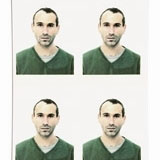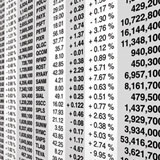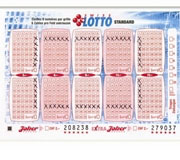Profile: Claude Closky

Cult figure or diffuser of the banal, Claude Closky is a master of complex sequences. Natasha Edwards considers the work of the French conceptual artist, who has a solo show on at Centre Pompidou in Paris
Spread across 16 screens, 3000 sequences, varying between four and 20 seconds, each accompanied by a burst of repetitive electronic dance music, circulate around the Espace 315 of the Centre Pompidou in Paris until 31 July. The work in question is Roundabout (Manège), created by Claude Closky for his solo show as winner of the Prix Marcel Duchamp, the French equivalent of the Turner Prize. Taken from the Internet, the sequences take in a dizzying variety of events, from the very prosaic to the very complicated. Chosen for their ‘hybrid yet equal’ quality, each is ‘the representation of an abstraction’, insists Closky. They test our cultural references and our knowledge of the conventions of graphic design – the barrage of consumer images that are the language of today’s society. ‘Roundabout talks of our environment, our daily behaviour, our relationship with time,’ he says.

A compulsive collector of magazines, Closky has long culled advertising imagery and slogans, magazine headlines and catchphrases, putting them together with the beguiling, inescapable logic that makes him, at 43, one of France’s best known and most idiosyncratic artists. In My Father (Mon Père), photographs of men with chiselled jaws and muscular torsos, taken from ads, are accompanied by handwritten captions, such as ‘it’s my father who gave me my bottle’ in a tongue-in-cheek look at social models. Working in both French and English (his mother is American), often with figures and numerical series (his father is a mathematician), chickens, telephone numbers, verbs and sunsets have all come under Closky’s scrutiny in works that vary from one-offs in art galleries and museums, to books and websites.
Softly spoken and ironic, he has a magpie-like capacity for accumulation – he’s a cult figure for those who adore his work and a mere diffuser of the banal for those who don’t. Behind the charm of the person and the artworks, there is sometimes a provocative aspect to this immersion in data. All the more so in Roundabout, where, in addition to the artist’s habitual obsession with series, he has added a time element/ the almost palpabletension of waiting between the image disappearing from one screen and another appearing on the next. How long before you divine what the sequence is? How long before the wait drives you crazy?

In March, Closky created a limited edition Adidas trainer, sold at hip lifestyle store Colette. In the Up and Down (Augmentation et Réduction) series for the Centre Pompidou, he designed the museum tickets, a set of fridge magnets and wallpaper for the staff offices. Indeed, wallpaper, with its built-in repetition, would seem to be an ideal medium for Closky – another wallpaper produced for the opening of Mudam, the new Musée d’Art Moderne Grand-Duc Jean in Luxembourg, takes the form of an endlessly extendable architectural drawing of studio flats. In parallel, Closky also designs websites, playing with typefaces, pop-ups, frames and interactivity, in both personal sites (www.sittes.net and http://closky.online.fr) and official sites for museums and businesses, including Ucad in Paris (the umbrella organisation for the decorative arts, advertising and fashion museums), DIA Art Foundation in New York, Magasin art space in Grenoble and Mudam, which opens on 1 July. Go to www.sittes.net and on ‘Me’, the letters ‘m’ and ‘e’ dart endlessly over the screen. On ‘Vote’, you can vote for glou glou, crunch, zap and other onomatopoeias, while the artist’s name mutates constantly across the top: Klaude Cosky, Laude Clausky, Colode Coloski, and so on.
Where is the limit to what Closky calls the ‘diversion’ of the website? He says there is no real difference between his personal sites and those for museums, though the ‘self-critical approach’ has to respect the informative, practical aspect of the latter. For Mudam director Marie-Claude Beaud, bringing in Closky as designer is for him ‘to take us further, to not be limited to technical prowess, but to take it and divert it – in short, to be an artist’.

Behind the fun, Closky reveals a serious critique and knowledge of graphic design. ‘I find graphic charters very dictatorial. Certain forms have been imposed that have become simple conventions,’ he says. For the new version of the Mudam site, which will be launched with the museum’s opening, the typeface and text colour will change each day in a seemingly random way. For Mudam’s on-line magazine, you can choose how quickly and in what direction the text scrolls, yet this ingeniously simple design element is characteristically mixed with an interview of artist Jonathan Monk (a yes/no checklist drawn from information found in articles) that is a conceptual artwork in its own right. Look up ‘Contributors’ and the names of the director, curator and the like are supplemented by the personal trivia of our endless databases – site conceptor and editor: Claude Closky; height: 1m 84; jacket: 52; trousers: 42; shoes: 43; hair: brown; eyes: green.
-
Post a comment




